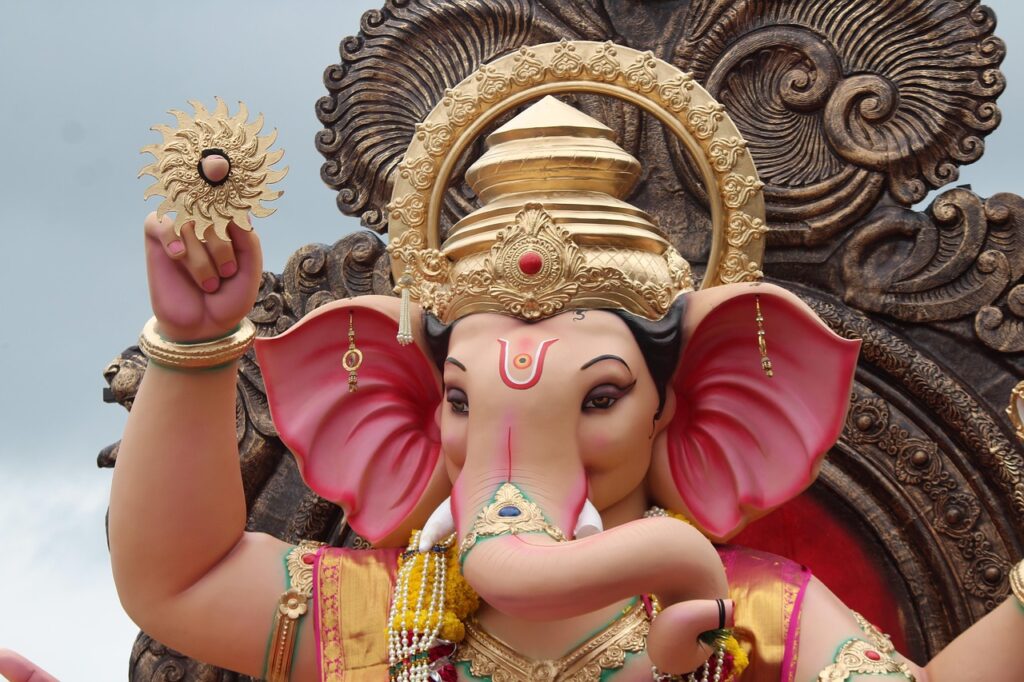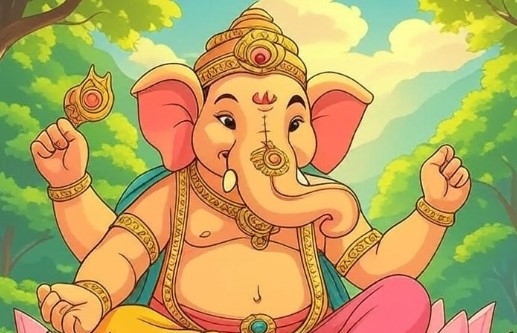Lord Ganesha is the First Scribe of the Mahabharata. The Mahabharata is not just a story; it’s a treasure chest of wisdom, philosophy, duty, politics, and war. Written thousands of years ago, it also contains the sacred Bhagavad Gita, earning it the title of the “fifth Veda.”
But before this epic was written down, it lived only in the mind of one man: the great sage Veda Vyasa, also known as Krishna Dwaipayana. His challenge? Turning this ocean of knowledge into words on paper. For that, he needed not just any writer, but someone who could keep up with his thoughts and grasp the depth of every shloka.
Vyasa Turns to Lord Brahma
Struggling with this task, Vyasa prayed to the creator, Lord Brahma. When Brahma appeared, Vyasa explained his problem. Smiling, Brahma replied:
“Vyasa, your work is unlike anything the world has seen. Only one being can write it, Lord Ganesha, remover of obstacles and god of wisdom.”
Ganesha’s Condition
Vyasa then approached Lord Ganesha. The elephant-headed deity agreed to help, but with a condition:
“I will be your scribe, but you must recite without pause. My pen must never stop.”
A divine work like the Mahabharata, Ganesha believed, had to flow without interruption.
Vyasa’s Clever Counter
Vyasa, however, was equally wise. He agreed but added his own twist:
“O Ganesha, you must fully understand the meaning of each shloka before writing it down.”
Ganesha, smiling as always, accepted. This ensured the writing was not just fast but also meaningful.

The Great Collaboration Begins
Thus began one of mythology’s most remarkable partnerships. Vyasa dictated, and Ganesha used his broken tusk as a pen.
Vyasa spoke continuously, but whenever he needed time to think, he cleverly recited deeply complex shlokas. Ganesha, true to his word, paused to grasp their meaning, giving Vyasa enough breathing room to compose the next verse.
Three Years, One Epic
This divine collaboration lasted for three years. Finally, the Mahabharata, with its 100,000 shlokas, was complete.
With Ganesha’s touch, the epic became more than a story of kings and battles. It turned into a sacred guide for humanity, timeless and universal. To this day, Ganesha’s broken tusk is remembered as the pen that gave the world the Mahabharata.
